Mikhail Aleksandrovich Kartsev - brave, genius, pioneer of computers
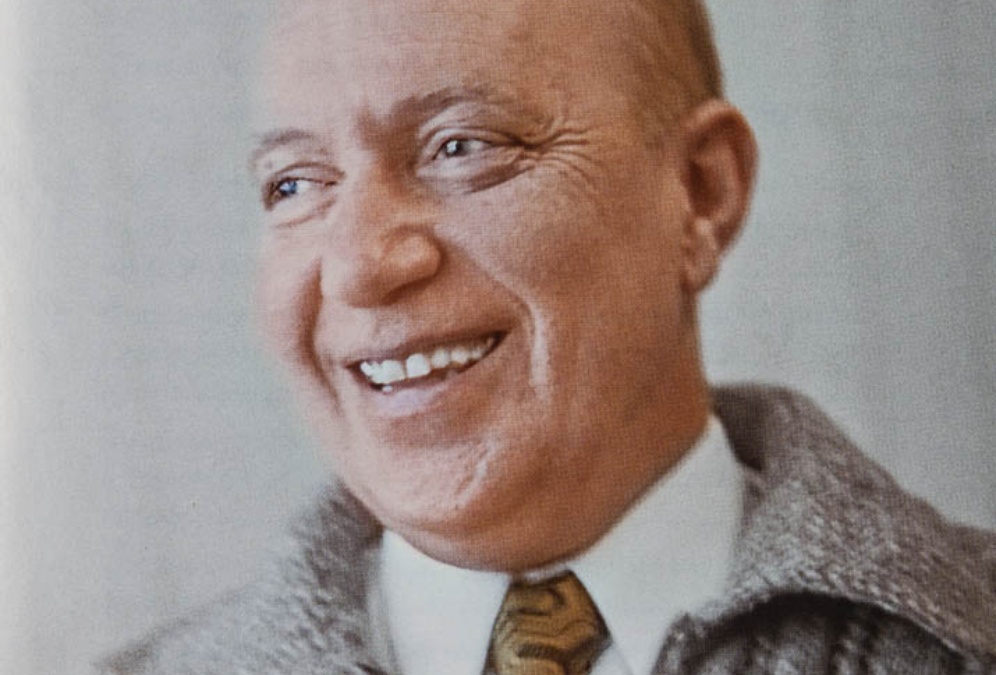
As it often happens and happens, many eminent minds do not receive that well-deserved glory and public recognition during its heyday. Often their merits in one area or another are obviously inalienable when a great man has already passed away. So it was with Mikhail Aleksandrovich Kartsev. But he never lost heart, never complained. He had his work, his brainchild, to whom he devoted himself to himself. So, and only this way, brilliant discoveries are born, and, pushing technology forward, inventions.
Early years and the war period.
Early years and the war period.
Mikhail Alexandrovich was born in a family of ordinary teachers, in Kiev on May 10, 1923. Unfortunately, his father passed away that same year, but his mother did not lose heart and always cared about the future of little Misha. In the pre-war period, the Kartsev family moved frequently. Odessa, Kharkov, and since 1934 - Kiev.
Secondary education he also received in Kiev. It was a turning point in 1941, both for the country and for the young man. Already in the summer, Mikhail was sent to the defensive line on the territory of Donbass. It became necessary to become a full-fledged soldier rather quickly, already in September of the same year, Kartsev received a summons to the army and, like most of the young guys of those times, went to defend the Motherland. His military activities lasted until February 1947.
During the Great Patriotic War, Michael was a tanker. He fought with the invaders in the second Ukrainian front, as well as in the South, North Caucasus and South-West. Mikhail Kartsev did not like to talk about the war years, but to tell you what. He participated in the battles for the liberation of Hungary, Austria, Czechoslovakia and Romania.
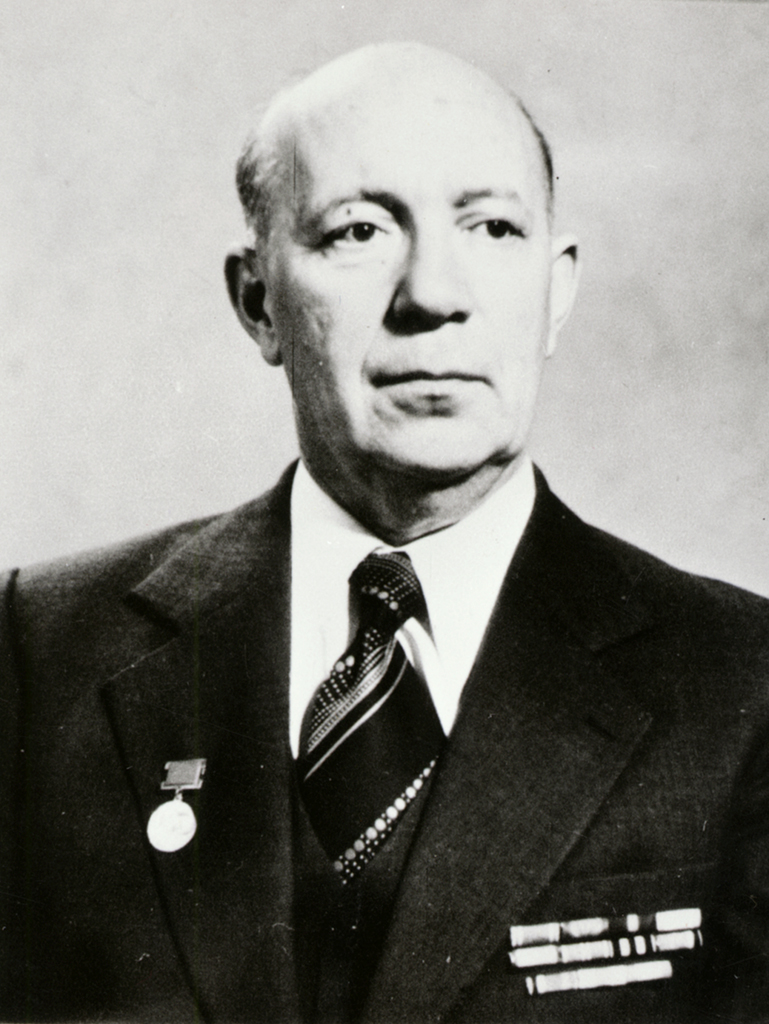
On the chest MA Kartseva has many awards, and there are no undeserved ones among them.
Among his fellow servicemen, he was respected, because he was always distinguished by courage, valor and honesty. These qualities, as well as the fact of participation in many battles, did not go unnoticed. Already at the age of 20, being a foreman, Mikhail was awarded the medal "For Courage", "For the Capture of Budapest", the Order of the Red Star and, of course, the medal "For Victory over Germany."
During the war there was another important event for the Soviet youth. Michael in November 1944 was accepted as a candidate member of the CPSU, and in May 1945 he was accepted.
Study and the beginning of a career
Not all young men who returned from the war, decided to get a higher education. But Michael was always a man of mental activity. And the mind, as they say, requires food.
Because Michael did not have time to take off his military uniform, he entered the Moscow Power Engineering Institute at the Faculty of Radio Engineering. To say that Michael was a talented student - to say nothing. Being in the third year, he passed the exams for the year ahead. Thus in 1950 he was a full fifth year student. In the same year, Mikhail made a fateful step - he joined the electrical systems laboratory of the Energy Institute of the Academy of Sciences of the USSR. During this period, development of one of the first computers in the USSR was going on, in which Kartsev took direct part.
In 1952, Mikhail Kartsev was sent as a junior researcher to the Energy Institute of the USSR Academy of Sciences. And it was no longer an internship, but a full-fledged job, with which he did an excellent job. The result of the work was a computer M-2.
At the same time, a BESM (Large (or High-speed) electronic counting machine) was developed. She was exaggerating I will say, big and powerful. But the beauty of the M-2 computer lay in the fact that, unlike BESM, it was developed by a small group of people, and its capabilities, although less, were still striking. Even Kartsev himself rather unequivocally described his work: “it was a solid machine”.
EUM M-4
Accidents are not accidental. So you can describe the following events that led to the creation of EUM M-4 and to the involvement of Mikhail Kartsev in this process.
While enjoying the fresh air and sunshine at the resort in Kislovodsk, two exceptional people met by chance - I.S. Brooke and Academician A.L. Mintz (in 1957 he was director of the Radio Engineering Institute of the USSR Academy of Sciences). Brooke began to tell his interlocutor about the work of his laboratory and about the possible use of computers in conjunction with radar systems. The conversation was exciting. Vacation came to an end, everyone parted. But the idea of a computer so deeply stuck in Mr. Mintz’s mind that he himself turned to I.S. Brooke with the proposal to create a device that will control the radar complex. The name of this device was EUM - electronic control machine.
It would be foolish to reject such a proposal, and already in December 1957 the technical task (plan) for EUM M-4 was approved. And the head of work on the miracle machine was appointed by none other than Mikhail Kartsev.
The work was not easy. Because early warning systems about rocket attack and space exploration required computers capable of coping with a large amount of information, while performing all operations as quickly as possible.
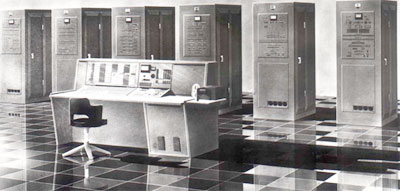
M-4
For such a large-scale work of one, even such a talented person as Kartsev, was not enough. Therefore, on the basis of the young Institute of Electronic Control Machines of the USSR Academy of Sciences, a laboratory No2 was created, the head of which was the same Kartsev.
In May 1958, the EUM M-4 project was successfully approved, and in April, the USSR Council of Ministers, without whose knowledge nothing was done, issued a decree on the establishment of MEM M-4. Simply put, the authorities gave the go-ahead and the work could begin.
The project was assigned several more names of outstanding minds of the Union: A.G. Shishilov - the chief engineer of the plant where the parts and assembly of the machine were made; Vs Semenikhin - head of the design office.
Direct factory work started in April 1958. The work was joint, engineers and designers, workers and scientists, all together controlled the process of creating each part, which was important and led to the fact that the latter were performed exactly as needed.
Already in 1959, the assembly of two EUM M-4s was completed. One of them was transferred to the Radiotechnical Institute the following year.
EUM M-4M
It seems everything is fine. EUM M-4 is designed and ready to go. But the question arises - how to connect the machine with a radar station so that information is transmitted in real time. To solve this problem, it was necessary to create a new device called KJP - a preprocessing device. And in January 1961, work began on its creation, which, naturally, ended in complete success.
And now, in 1962, the second M-4 machine (remember, the first one was transferred to the Institute), together with the UPR, were transferred for tuning. After testing in July of the same year, EUM M-4 with the UPR was approved for trial operation.
November was an even happier month for all those who worked to create a super-car. It was approved mass production.
Well, here it is precisely time to put an end. But no. Mikhail Kartsev did not want to stop there. After all, technology has evolved, so why should its creation use elements of the old technology. He proposed to create a new car, in which all the shortcomings will be eliminated and modern parts will be used.
Nobody was going to resist the arguments of Kartsev. Therefore, in May 1963, a draft of the first M-4M cabinet was prepared, and in August a draft of the entire machine.
Only a year later the first two sets were released. They quickly passed the test, experienced launch, configuration and other necessary procedures. He creators of the M-4M demanded a speed of 100,000 operations per second, but their brainchild gave out an incredible 220,000.
Such indicators could not but surprise. M-4M gained immense popularity and, until 1985, more than 100 sets were created.
Unrealized project VC M-9
Truly outstanding results of the M-4M seemed to be the ultimate dream. And if you combine several computers into a single system? This is exactly the question that Mikhail Kartsev asked himself. In 1966, he voiced this idea.
Calculations have shown that such a complex can provide speed of 1 billion operations per second. Breathtaking, simply transcendental figure. Of course, Kartsev and all his colleagues wanted to immediately implement this seemingly unreal breakthrough. Therefore, already in 1967, the draft VC M-9 was ready.
The complex consisted of several basic elements: a control processor and 4 types of computers (functional, operator, numerical, associative and external computer).
The basis of the work of the complex is not the processing of individual numbers, but of their groups, a kind of functions. Thus it was required to realize deeper semantic connections. That is, it was necessary to take into account the connection not only between the individual digits of one number, but also between the numbers themselves, which were the value of one function.
Kartsev called this machine functional-operator. She had a rather weighty difference from conventional computers, which consisted in the organization of work with each other AU (arithmetic devices). AUs worked from a common clock generator. Each of the machines performed its operations for 1-2 cycles. The end of the operation and the beginning of a new one were accompanied by the exchange of information between the output of the AU and the input of the storage unit during recording, and the input of the AU and the output of the storage unit when reading data.
For other types of machines:
- Vector numeric - operations on parts of functions;
- Associative - very productive, because it was used to work on sorting and organizing arrays of information;
- Numeric - worked on its own program and on the program, synchronized with other machines.
Thus, VK M-9 consisted of several non-one-type computers. This allowed the complex to work with different types of information, while not losing speed and performance.
Despite all the revolutionary characteristics, VC M-9 was not allowed into mass production. But the works were not forgotten, and in 1967 the NIIVK (Research Institute of Computer Systems) was created under the leadership of Mikhail Kartsev. Thus, Kartsev was able to continue to work on the development of computers and complexes consisting of them.
M-10 - child VK M-9
VK M-9 served as the basis for the development of a new computer M-10. In 1969, the government decided to create this car, which later became a man-made masterpiece.
Before approval from the parent bodies was a discussion. There were 2 projects under consideration: M-10 from Mikhail Kartsev and Elbrus from Sergey Lebedev. The views of two geniuses were completely different. Unlike Kartsev, Lebedev was categorically opposed to proprocessing, believing that it is possible to achieve high performance on one machine, and there is no need to combine several into one complex. Fortunately for both, their projects were approved. And everyone could actually demonstrate the merits of their theories.
In 1973, two samples were made, which successfully passed the test and all sorts of tests. M-10 was put, roughly speaking, on the conveyor, which worked for 15 years.
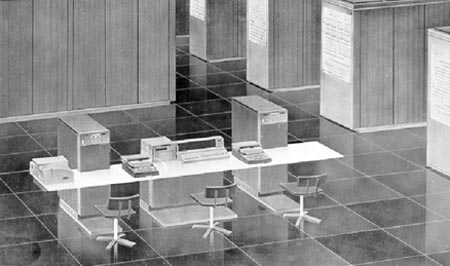
M-10
This car was a great achievement. At the same time, it is large and literally. To accommodate all the equipment required 31 closets. Of these, 8 were occupied by the first-level operational memory (ferrite cores M-100P2 with an outer diameter of 1 mm), 8 cabinets - permanent memory (interchangeable metal punch cards), 4 cabinets - second-level memory (M-100P2 cores). Where is such a colossus to place? Such a question was visited far from one. And so it was decided to start research in the field of storage devices. The essence of which was to create such devices that are not inferior to their predecessors in terms of volume, but will be physically smaller, more compact. In 1974, research gave the first results. Now the memory of the first and second level used integrated circuits, and the permanent memory is toroidal magnetic cores with diametrical holes, which ensured the reading of data without physical destruction. And since 1975, began to produce new storage devices. With their help, we managed to place the first-level memory in 1 cabinet, and the second-level memory and a constant in 2 cabinets each. At the same time, the performance of the M-10 was not lost. So there was a modification of the M-10 under the name M-10M.
Despite the lack of confidence on the part of the academic community, the skeptical statements of some eminent academicians and researchers in the field of computers, M-10 still made way for a bright and long future.
The team that created the unique car was awarded the USSR State Prize in 1977.
The last creation of the great genius The
life of Mikhail Kartsev revolved around work, which, of course, did not prevent him from being a good family man. However, the work above all and to stop at the achieved results, although so ambitious, he was not going to.
1978 M. Kartsev decided to create a new car, based on the M-10 and M-10M. The name of this car is M-13.
The process began in 1979, when Kartseva’s team set up a project and identified the plants where the machine will be held. Between 1980 and 1981, they were given a project.
The M-13 was designed to handle large data streams, for which several of its main elements were developed: the processor part, the operating system hardware, subscriber interface, and the specialized processor part. Below is a little more detail about each of them.
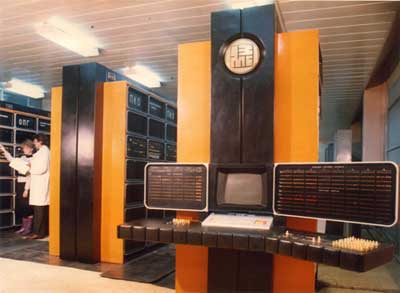
M-13
The processor part consists of arithmetic processors, main RAM, main permanent memory, second-level memory, central switch, central control, editing device and multiplex channel.
The operating system hardware consists of a central control processor, a virtual three-level memory table, and search tools.
Subscriber interface consists of a standardized electrical interface, a programmable interface and interfacing processors.
The specialized processor part consists of a technical control controller, a control memory of hypotheses, and coherent processing processors.
Life is so short, and sometimes we do not have time to do everything that we have planned. Unfortunately for the NIIVK team and for the entire world scientific community in 1983, on April 23, Mikhail Aleksandrovich Kartsev died. He did not wait for the realization of his last brainchild - M-13. However, the work of genius did not go away with him. Yuri Rogachev, who worked under the supervision of Kartsev, was appointed new director of the institute and chief designer of the M-13. He set himself the task of completing what his mentor and colleague, Mikhail Kartsev, began.
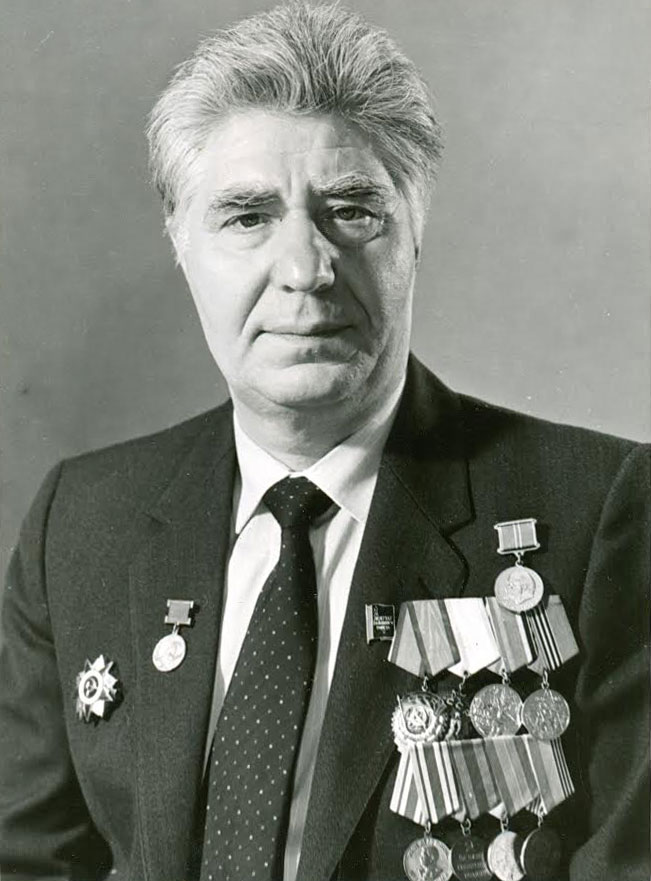
Yuri Rogachev
There were some difficulties in finding the plant, but they were able to overcome them and in 1984 the process was successfully started.
For their contribution to the development of domestic computing technology, the institute team deservedly received the Order of the Red Banner of Labor in 1986.
Since 1993, the Research Institute of Computing Complexes began to bear the name of Mikhail Kartsev. Thereby marking his enormous contribution not only in the work of the institute, but also in the development of computer technology of the USSR and the world.
Conclusion
During his long career, Mikhail Aleksandrovich Kartsev did not just design and create smart machines, he created the future. Many of his scientific works became the basis for the study of computers and their development. He had many supporters and followers, there were opponents of his ideas, which were sometimes called insane. But this did not stop Michael, who knowingly earned the medal "For Courage" during the war. For he was truly a brave man, both on the battlefield and in the laboratory.
The son of Michael, Vladimir spoke of his father as follows: "My father was not one of those people who complain about their problems and tend to talk them out of it frontage memories were pulled almost impossible, he did not live the past and the future."
And our the present would never be like this if it were not for the vision of the future great genius and just a brave man Mikhail Alexandrovich Kartsev.
As advertising. These are not just virtual servers! These are VPS (KVM) with dedicated drives, which can be no worse than dedicated servers, and in most cases - better! We made VPS (KVM) with dedicated drives in the Netherlands and the USA(configurations from VPS (KVM) - E5-2650v4 (6 Cores) / 10GB DDR4 / 240GB SSD or 4TB HDD / 1Gbps 10TB available at a uniquely low price - from $ 29 / month, options with RAID1 and RAID10 are available) , do not miss the chance to issue order for a new type of virtual server, where all resources belong to you, as allocated, and the price is much lower, with a much more productive hardware!
How to build the infrastructure of the building. class c using servers Dell R730xd E5-2650 v4 worth 9000 euros for a penny? Dell R730xd 2 times cheaper? Only we have 2 x Intel Dodeca-Core Xeon E5-2650v4 128GB DDR4 6x480GB SSD 1Gbps 100 TV from $ 249 in the Netherlands and the USA!
